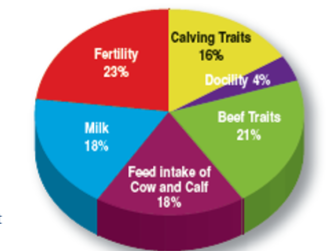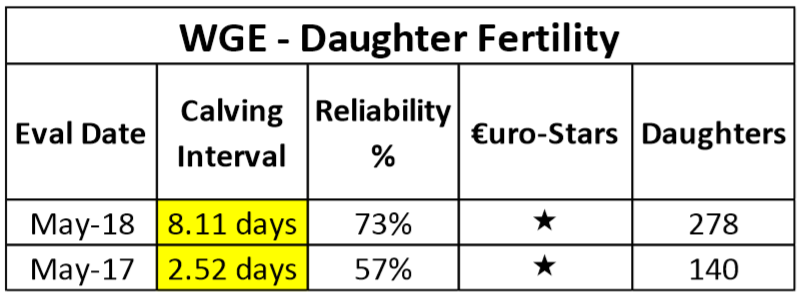Case study of a bull’s €uro-Stars changing – Wilodge Cerberus (WGE)
A question that has puzzled cattle breeders and beef farmers in recent times is: Why would a bull’s figures drop from 5-stars to 1-star in such a short period of time?
A bull’s €uro-Star figures dropping is very frustrating for a farmer that had used that bull based on his figures before they changed.
In the following article, the Irish Cattle Breeding Federation (ICBF) uses Limousin AI bull Wilodge Cerberus (WGE) to explain why a bull’s index can change.
In May 2018, he was €48 (1-star) for Replacement Index with a reliability of 90%. In May 2017, he was €111 (5-stars) for Replacement Index with a reliability of 83%.
Q. What are the main reasons for the bull’s figures dropping from 5-star to 1-star in one year, given his reliability % was already high with over 1,000 progeny included in the evaluation?
Reliability %: 80% reliability for an overall index is not extremely high – there is still room for movement. It is only when a bull goes over 95% for reliability that his index will remain extremely stable.
WGE’s progeny were found to perform well for the main beef and calving traits, which makes up 55% of the overall Replacement Index; so he started out with a good index.
However, it was only when ‘milk’ and ‘fertility’ could be recorded on his daughters – after they calved – that they were found to be far heavier and not as fertile as the other cows in their herds.
The bull has always been rated highly for the beef traits, which are always the first traits to be collected on a bull’s progeny.
So his ‘Terminal Index’ has always been high and – until large numbers of his daughters started calving for a second time – his Replacement Index was being largely driven by his beef traits (Figure 1).
However, the maternal aspect of a bull’s proof is always the last piece of the jigsaw and it is that part of his Replacement Index that is now affecting WGE’s overall figure.
Daughter fertility: The main reason that the Replacement Index for WGE has decreased is because it is only now that the fertility performance of his daughters has become fully known.
Wilodge Cerberus has sired over 1,000 calves born in Ireland, but it is only his daughters that calve that contribute to his fertility index.
Given that ‘Calving Interval’ is a lowly-heritable trait, you need a lot more records to lift its reliability % than you would for other more highly-heritable traits, such as calving difficulty.
So, although he has sired over 1,000 calves – in May 2017 – he only had 140 cows with calving interval figures.
The performance of his daughters for fertility in Irish herds and the data returned on him by Irish farmers always had him rated as a 1-star or 2-star bull for calving interval.
Cow liveweight: His daughters were found to be 17kg heavier and 1.5 parities younger than their herdmates. Given the number of his daughters that have been weighed, mainly through the Whole Herd Performance Recording program (WHPR), this information is now 97% reliable.
Genomics: WGE was also only genotyped in December 2017 which also contributed to his Calving Interval Index decreasing and his terminal traits increasing.
If he had been genotyped earlier, then this reduction in his proof would have happened earlier in his career.




